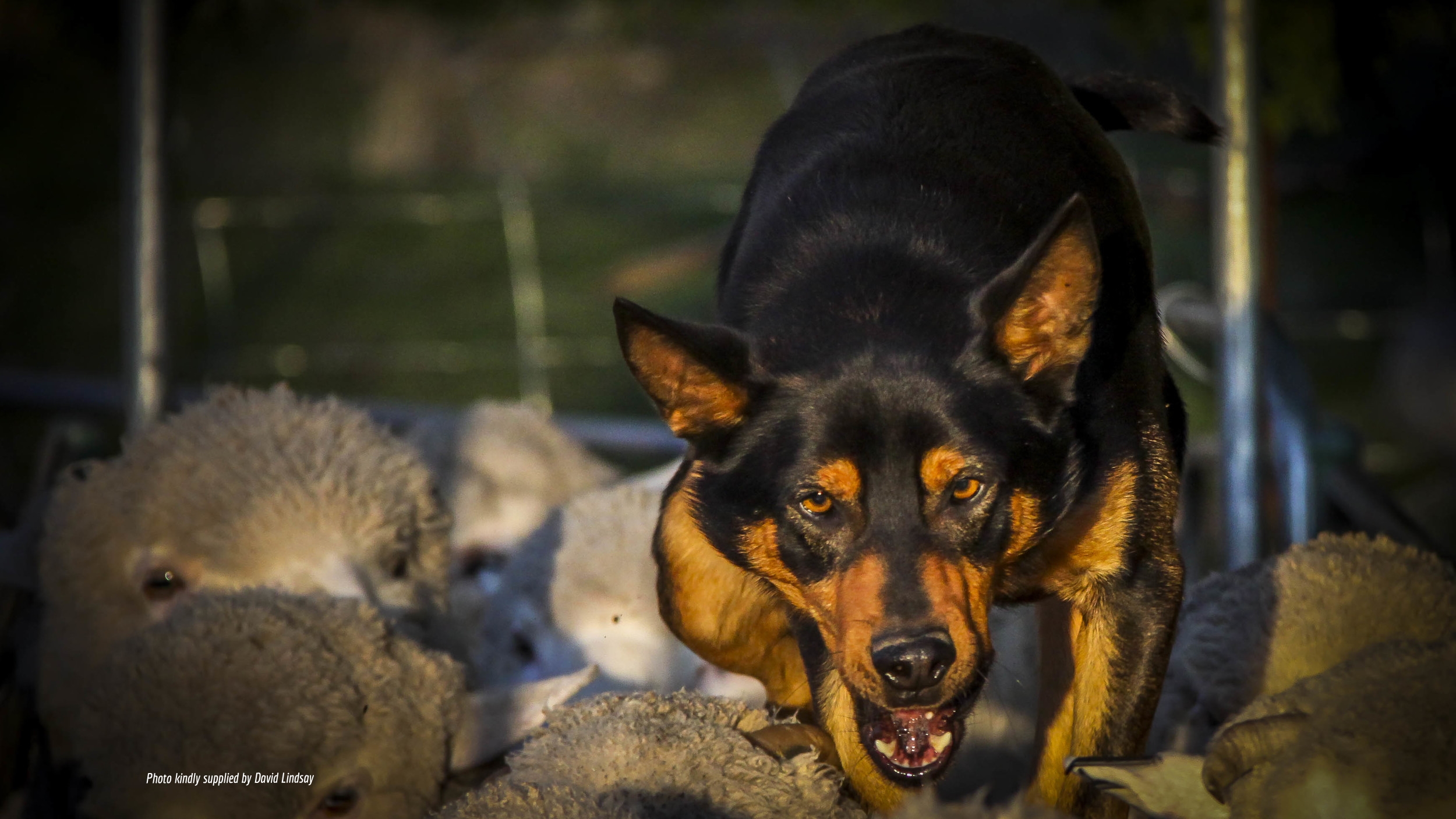Breeding
Livestock Working Dogs and their handlers make an enormous contribution to the Agricultural income of Australia, and the increased efficiency of livestock movements, provided by well-bred dogs, puts the minimum of stress on the animals they move. Livestock Working Dogs are indispensable in the livestock production sector of our Agricultural industry.
Livestock Working Dogs and their handlers make an enormous contribution to the Agricultural income of Australia, and the increased efficiency of livestock movements, provided by well-bred dogs, puts the minimum of stress on the animals they move. Livestock Working Dogs are indispensable in the livestock production sector of our Agricultural industry.
Photo kindly supplied by Nan Lloyd
Photo kindly supplied by Nicky Holmberg
Photo kindly supplied by David Lindsay
The relationship between stockmen and women and their dogs is based on mutual respect gained through hours, days and years of working together under the various challenges which present themselves in the livestock husbandry environment. The trust and affection forged between the dogs and those who work with them is legendary.
Who are Livestock Working Dog breeders?
Typically Livestock Working Dog breeders are based in rural areas. They are either livestock farmers; employed on grazing properties; or work as contractors or agents; in transport, or abattoirs; or are trial enthusiasts; and do not run ‘Breeding Establishments’ or ‘Facilities’. They breed dogs for their own use and supply pups and dogs to those involved in the livestock industry. Very few Livestock Working Dogs are sold as pets. Livestock Working Dog breeders typically breed a small number of litters per year. However they need to keep a number of females and potential sires to prove them in work before breeding and for the maintenance of valuable blood lines.
Selection
Unlike Companion dogs, Livestock Working Dogs are bred primarily for their working ability. Inherited working traits, physical soundness and desire to work are of supreme importance. There are several recognised breeds used and crossbreds of those breeds and they come in many different colours. Depending on the breeds they can be short or long coated. They are descended from dogs selected for their working ability over hundreds of years.
It is essential that a potential Breeding dog is assessed for ability. The ideal place to assess these dogs is in a situation where there is considerable and varied stock work. Therefore the owner/breeder must work in Agriculture or in a related area where dogs are used to move livestock.
The Agricultural sector is accepted as a relatively high risk work area. It can be a very challenging environment. This not only applies to the people working in it but also to their Livestock Working Dogs. Working with livestock of various types and temperaments, exposed to all possible weather conditions, in all types of country and often for lengthy periods provides plenty of opportunities for accidents to occur. Tragically sometimes dogs are seriously injured. If a breeder loses a valuable dog and does not have, or have access to entire and proven replacement dogs of that bloodline, that line is lost to them and potentially to the industry.
Welfare
In May 2012, the Working Kelpie Council of Australia released a Code of Welfare for Australian Livestock Working Dogs. It has been accepted by all Livestock Working Dog groups throughout Australia. This Code was adapted from the New Zealand Government 2010 Code of Welfare for Dogs, with permission from the Animal Welfare Directorate, MAF Biosecurity New Zealand. A copy of the Welfare Code is available here.
Prior to its release the Australian Working Kelpie Council Code of Welfare was discussed at length and additions were made with consideration to Australian working conditions and climate variability. Livestock Working Dog handlers and breeders with many years’ experience and from all states, took part in the discussion. It was agreed that the final draft was practical, workable, and offered a high level of welfare for Livestock Working Dogs. It has Minimum Standards and Recommended Best Practice which apply to all Livestock Working Dogs and has a section on the extra requirements of breeding dogs.
With the review of Legislation, in some States, regarding the Welfare and Breeding of dogs, primarily aimed at the prevention of ‘Puppy Farms’, it became obvious to the Livestock Working Dog workers and breeders attending consultations that there was a lack of knowledge amongst legislators, and the general public, about almost all facets of the husbandry and use of Livestock Working Dogs in rural Australia.
In some cases there was no consultation whatsoever with those involved with Livestock Working Dogs in the formulation of the initial drafts of these codes. Livestock Working Dogs were initially included with Companion animals which are not kept, selected or bred with the same objectives in mind. Some new State regulations in no way improve the actual welfare of Livestock Working Dogs.
Through consultation with State Governments, Livestock Working Dogs and their breeders should be accepted into a separate and different category. Attempting to 'fit' Livestock Working Dogs and their husbandry into codes developed for Companion dogs requires a degree of compromise which results in an unsatisfactory and impractical outcome for the owners/breeders, threatens the maintenance of genetic variability, and the future availability of dogs to the livestock industry.



